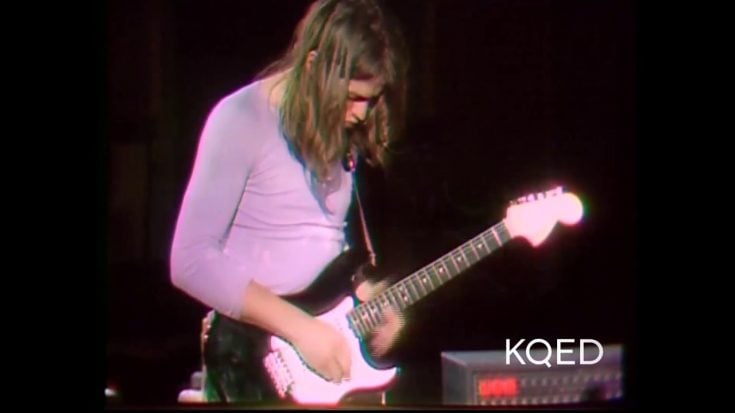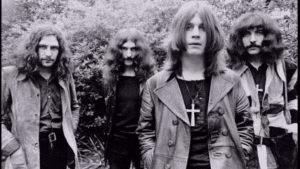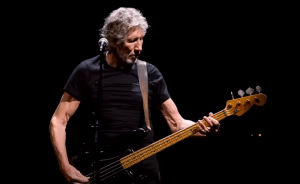The 5 Killer Guitar Solos From The 1970s That Are Unmatched Even Today

via HDPinkFloyd / Youtube
Killer guitar solos have a way of standing out, capturing the raw energy and emotion of rock music. The 1970s, in particular, delivered some of the most electrifying and memorable solos in music history. These moments not only defined songs but also showcased the incredible talent and creativity of guitarists during the era.
The decade was a golden age for rock, with artists pushing boundaries and exploring new sounds. Guitar solos became more than just a section of a song—they were anthems in their own right. They carried power, precision, and a sense of freedom that resonated with listeners everywhere.
From blistering riffs to intricate melodies, the 1970s produced guitar solos that still feel unmatched today. Each one tells a story, leaving an enduring legacy that continues to inspire musicians and fans alike. Here’s a closer look at five of the best from that unforgettable era.
1. “Time” by Pink Floyd
“Time” by Pink Floyd stands out for its unforgettable guitar solo, which is one of the most powerful moments in rock history. Featured on the iconic 1973 album The Dark Side of the Moon, the track takes listeners through an emotional journey, and David Gilmour’s solo is no exception. His expressive, soulful playing conveys a depth of feeling that elevates the song to another level.
Unlike many guitar solos that rely on complexity, Gilmour’s approach to “Time” is refreshingly simple. The solo is clean and focused, with each note packing a punch. It’s not about flashiness but about making every second count, creating a tone that feels raw and honest.
This minimalist style contrasts with the song’s themes of time, fleeting moments, and existential reflection. The solo serves as a perfect reflection of those themes, grounding the track emotionally. Gilmour’s performance on “Time” remains a benchmark for the impact a guitar solo can have, both in terms of technicality and emotional delivery.
2. “Free Bird” by Lynyrd Skynyrd
“Free Bird” by Lynyrd Skynyrd is a staple when it comes to iconic guitar solos. Released in 1973 on their debut album (Pronounced ‘Lĕh-‘nérd ‘Skin-‘nérd), the song became a defining moment for the band and remains their most recognized track. The song’s blend of country, rock, and Southern flair has made it a fan favorite, with the solo becoming a hallmark of rock music history.
What sets the “Free Bird” solo apart is its balance of simplicity and power. Allen Collins’ performance is not about complicated fingerwork but about letting the emotion of the music shine through. His soaring guitar work builds gradually, intensifying as it progresses, making it an unforgettable ride for listeners.
The song’s live performances, particularly the extended solos, are legendary. The band’s ability to improvise during live shows gave the solo even more life, turning it into a crowd-pleasing spectacle. “Free Bird” has grown beyond just a song—it’s become a symbol of rock freedom, cementing its place as one of the greatest guitar solos of all time.
3. “Highway Star” by Deep Purple
“Highway Star” by Deep Purple is a standout example of Ritchie Blackmore’s virtuosity and influence in the world of rock guitar. Released in 1972 on their album Machine Head, the song captures the essence of heavy rock and speed, with Blackmore’s blistering guitar work at the forefront. The track’s high-energy riff and fast pace set the stage for one of the most electrifying solos of the decade.
Blackmore’s solo on “Highway Star” showcases his unique style, blending technical skill with raw power. What makes it particularly special is how Blackmore incorporates classical elements, particularly the influence of Johann Sebastian Bach. This classical inspiration can be heard in the way Blackmore uses intricate scales and arpeggios, making the solo both sophisticated and fiery.
The impact of “Highway Star” extended beyond Deep Purple’s own fanbase. Blackmore’s performance influenced a new generation of guitarists who sought to emulate his precise, lightning-fast techniques. As a result, “Highway Star” remains one of the most enduring and admired guitar solos in rock history.
4. “Eruption” by Van Halen
“Eruption” by Van Halen revolutionized the world of guitar solos when it was released in 1978. Featured on their self-titled debut album, the instrumental track became a game-changer in rock music. At nearly two minutes, Eddie Van Halen’s solo pushed the boundaries of what guitar playing could do, showcasing his groundbreaking technique and creativity.
The solo is a perfect demonstration of Van Halen’s signature style, including his famous two-handed tapping technique. This technique, which was relatively unknown at the time, immediately set him apart from other guitarists. His lightning-fast playing, combined with the use of harmonics and innovative phrasing, made “Eruption” a must-listen for aspiring musicians.
“Eruption” not only solidified Van Halen’s place in rock history but also inspired generations of guitarists to rethink what was possible on the instrument. The solo’s technical brilliance, combined with its fiery energy, has made it a defining moment in guitar history. Even decades later, “Eruption” continues to serve as a benchmark for guitarists worldwide.
5. “Beyond The Realms Of Death” by Judas Priest
“Beyond the Realms of Death” by Judas Priest is a cornerstone of heavy metal, showcasing the genre’s most powerful elements. Released in 1978 on Stained Class, the song’s nearly seven-minute runtime packs in all the aggression, complexity, and skill that would define the band’s sound. The track is often hailed as one of the best examples of classic metal.
The song’s guitar solos, performed by Glenn Tipton and K.K. Downing, are a key part of its legendary status. Both solos are an exhibition of technical precision, with each guitarist bringing their own unique style to the track. Tipton’s melodic lines and Downing’s aggressive riffs create a perfect balance, adding intensity and depth to the song.
“Beyond the Realms of Death” also benefits from Rob Halford’s soaring vocals, which helped elevate it from a traditional power ballad to something truly iconic. The combination of blistering guitar solos, powerful vocals, and the song’s epic structure has made it a defining moment in Judas Priest’s catalog, influencing countless metal bands that followed.
















